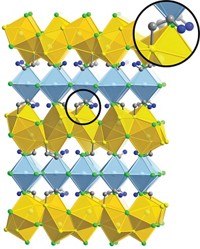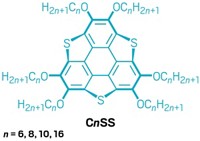Advertisement
Grab your lab coat. Let's get started
Welcome!
Welcome!
Create an account below to get 6 C&EN articles per month, receive newsletters and more - all free.
It seems this is your first time logging in online. Please enter the following information to continue.
As an ACS member you automatically get access to this site. All we need is few more details to create your reading experience.
Not you? Sign in with a different account.
Not you? Sign in with a different account.
ERROR 1
ERROR 1
ERROR 2
ERROR 2
ERROR 2
ERROR 2
ERROR 2
Password and Confirm password must match.
If you have an ACS member number, please enter it here so we can link this account to your membership. (optional)
ERROR 2
ACS values your privacy. By submitting your information, you are gaining access to C&EN and subscribing to our weekly newsletter. We use the information you provide to make your reading experience better, and we will never sell your data to third party members.
Materials
New Organic Designs For Ferroelectrics
Computational technique evaluates polymorphic crystal structures and predicts new combinations for making record-setting materials
by Mitch Jacoby
April 28, 2014
| A version of this story appeared in
Volume 92, Issue 17
Using a newly developed computational technique to predict structural and electronic properties of as-yet-unsynthesized materials, chemists have designed a group of ferroelectric organic crystals that promise to outperform current state-of-the-art materials (J. Am. Chem. Soc. 2014, DOI: 10.1021/ja5017393). Ferroelectric materials have a knack for flipping electrical polarization when triggered by an electric field. That property makes them useful in random access memory devices, capacitors, and transistors. Common ferroelectrics such as barium titanate are inorganic. Because the range of applications could be broadened by lighter, more flexible, and less expensive materials, scientists have been searching for organic versions. Motivated by a 2012 study reporting success in synthesizing ferroelectrics based on tetrathiafulvalene (TTF), an electron donor, and pyromellitic diimide (PMDI), an electron acceptor, Shuang Chen and Xiao Cheng Zeng of the University of Nebraska, Lincoln, computationally screened tens of thousands of crystal structures based on TTF and PMDI motifs. The search turned up three highly stable compounds with predicted polarization values up to twice as large as today’s top performers.




Join the conversation
Contact the reporter
Submit a Letter to the Editor for publication
Engage with us on Twitter